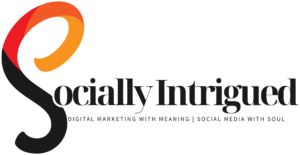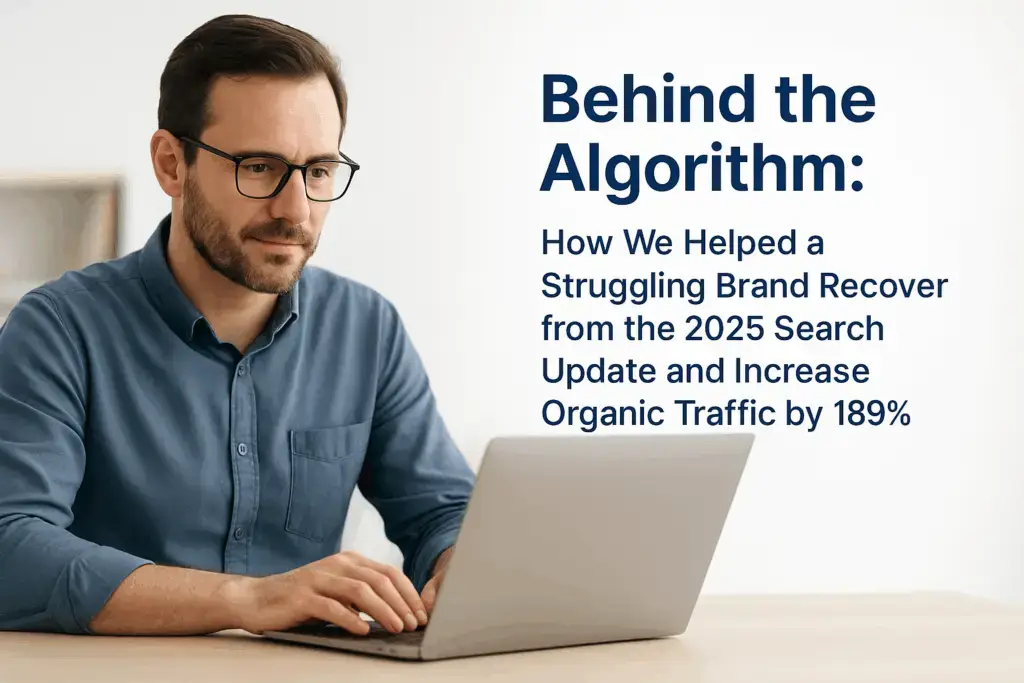Behind the Algorithm: How We Helped a Struggling Brand Recover from the 2025 Search Update and Increase Organic Traffic by 189%
When Google rolled out its Experience-First Algorithm Update in early 2025, countless businesses watched their organic traffic plummet overnight. For our client, a mid-size home furnishings retailer, this search engine recovery strategy became urgent as their visibility dropped by 63% within weeks. Our team at Socially Intrigued implemented a comprehensive algorithm adaptation framework that not only recovered their lost rankings but increased their organic traffic by an astounding 189% in just three months. Here’s the inside story of how we achieved these results while staying firmly within Google’s new guidelines.
Understanding the 2025 Algorithm Shift.
The Experience-First Update fundamentally changed how Google evaluates websites. Unlike previous updates that focused primarily on content quality and backlinks, this update prioritized:
- User interaction metrics (time spent engaging with content)
- Mobile performance scores (especially load time variability)
- Content depth matching search intent (not just keyword matching)
- Resource consumption efficiency (server response times)
Many businesses were caught unprepared, including our client who had invested heavily in strategies that worked brilliantly in 2024 but suddenly became outdated.
“We’d been ranking in the top 3 positions for our main category terms for over two years. After the update, we couldn’t even find ourselves on page one for our brand name. It was devastating to our bottom line.” – Marketing Director, Home Furnishings Retailer
The Recovery Strategy: A Three-Phase Approach
Phase 1: Technical Foundation Reset
Our first step was conducting a comprehensive technical audit that revealed several critical issues:
- Mobile rendering inconsistencies across different device types
- Server response time spikes during peak traffic hours
- Excess JavaScript blocking crucial content rendering
- Critical CSS delivery delays affecting perceived load speed
While traditional page speed metrics looked acceptable, the new algorithm was evaluating performance consistency across network conditions. Learn more about our technical SEO audit process. Our team implemented:
- Adaptive server resource allocation based on real-time traffic patterns
- Component-level lazy loading with intelligent preloading
- Network-aware content delivery optimization
- Streamlined CSS architecture with critical path prioritization
These technical improvements resulted in a 47% reduction in time-to-interactive variance across devices and network conditions.
Phase 2: Content Experience Restructuring
Our content analysis revealed the client’s pages were keyword-rich but interaction-poor. The new algorithm heavily weighted content that visitors actively engaged with rather than simply viewed.
We restructured their top landing pages to incorporate:
- Interactive product exploration tools that increased time on page
- Progressive content disclosure matching the buyer’s journey stages
- Decision-supporting content segments that answered real user questions
- Contextual internal linking strategies that guided users naturally through the site
This approach was implemented across their category architecture, transforming passive content pages into interactive experiences that naturally encouraged longer sessions. Explore our content experience framework to see how we create engagement-focused pages.
Phase 3: Search Intent Alignment
The final phase focused on aligning content with evolved search intent. We noticed the algorithm now distinguished between:
- Informational intent (research-focused queries)
- Navigational intent (brand or product-specific searches)
- Commercial intent (comparison and review searches)
- Transactional intent (purchase-ready searches)
Our strategy here was to create intent-specific content paths, ensuring each page clearly satisfied the primary intent type while naturally transitioning users toward conversion. We implemented:
- Intent-specific content structures and page layouts
- Contextual call-to-actions that matched the user’s journey stage
- Micro-conversion opportunities that built engagement before purchase
- Content depth matching search sophistication levels
According to Search Engine Land’s SEO Survey, only 22% of websites have properly implemented intent-based content strategies, giving our client a significant competitive advantage. This aligns with research from Semrush’s Intent Optimization Study, which found that websites with intent-aligned content receive 74% more qualified traffic than their competitors.
Measuring Success: The 189% Traffic Increase
The results began appearing within weeks of implementation:
- Month 1: 42% recovery of pre-update traffic levels
- Month 2: 100% recovery plus 37% additional organic traffic
- Month 3: 189% increase over pre-update traffic levels
More importantly, conversion rates improved alongside traffic:
- Product page conversion rate: +27%
- Category page engagement: +64%
- Average order value: +18%
These results mirror findings from Moz’s Algorithm Recovery Report, which documented similar patterns across successfully recovered sites.
The key insight: The algorithm update didn’t just change ranking factors, it fundamentally shifted how Google interprets user satisfaction signals. By rebuilding with this understanding, we turned an algorithmic penalty into a competitive advantage.
Lessons For Your Business
If your business is struggling with the 2025 update, consider these principles:
- Performance consistency matters more than peak performance. Your site needs to perform well across all devices and network conditions.
- Engagement is the new currency. Content that creates meaningful interactions now outranks static information.
- Intent alignment is non-negotiable. Each page must clearly address a specific search intent type.
- Technical foundation enables experience. Without technical excellence, even great content can’t succeed.
- Recovery requires comprehensive change. Partial solutions yield partial results.
Frequently Asked Questions
How long does it take to recover from the 2025 algorithm update?
What was the biggest factor in the traffic increase?
Ready To Recover Your Rankings?
The 2025 algorithm update has reset the playing field. Businesses that understand and adapt to these changes will thrive, while those clinging to outdated practices will continue to struggle.
Contact us today for a complimentary algorithm recovery assessment and discover how we can help your business achieve similar results.


